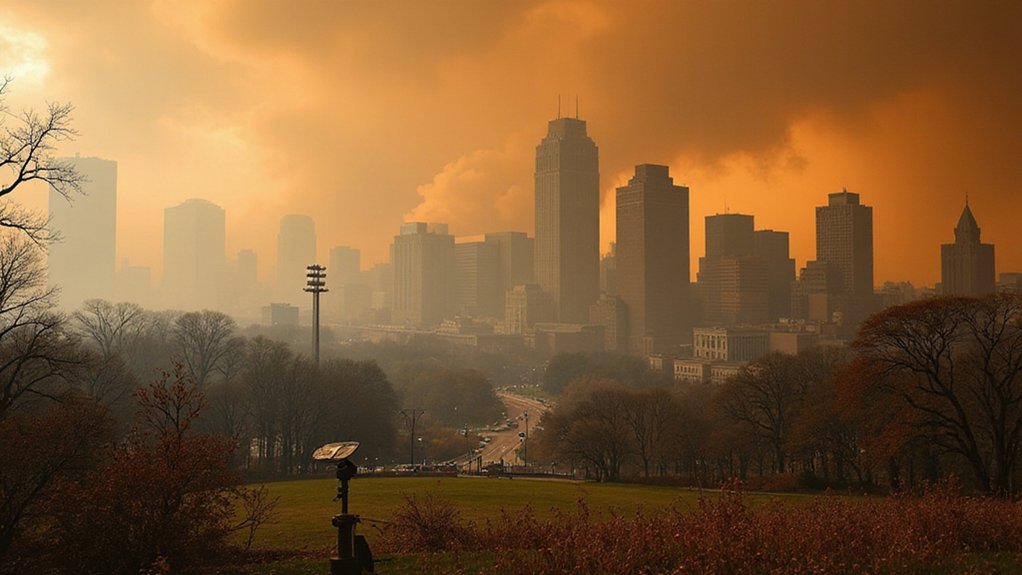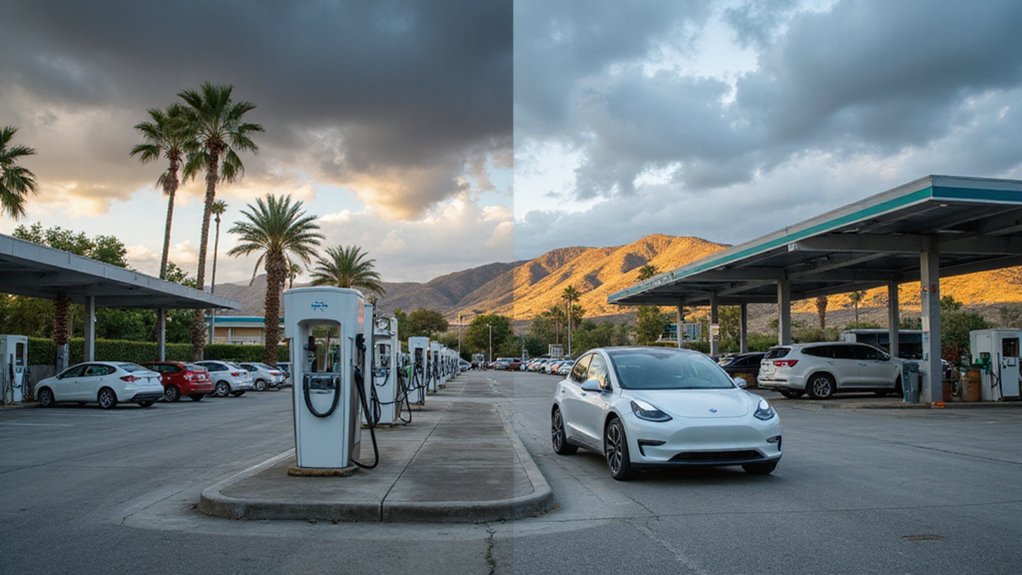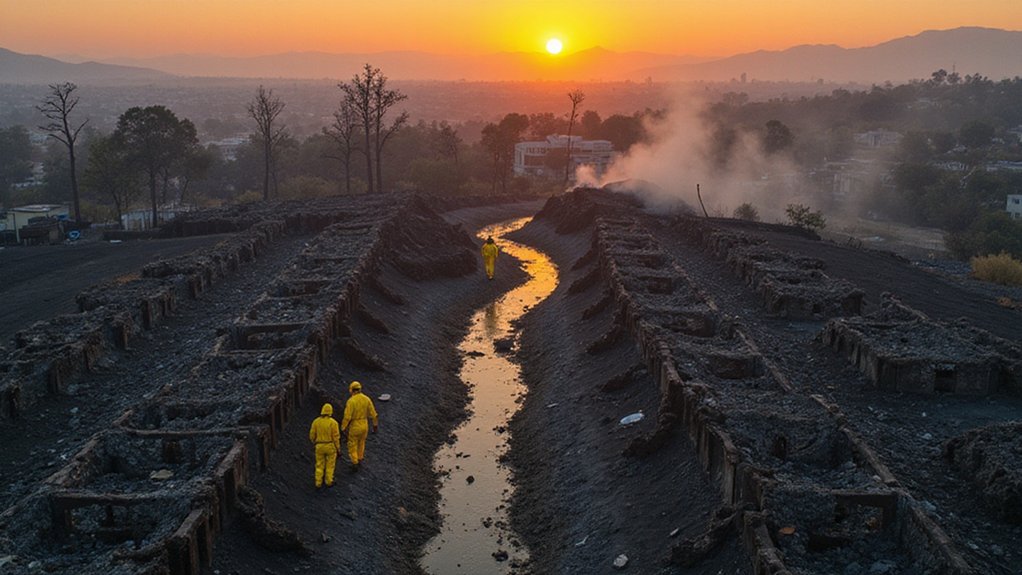While Massachusetts residents breathe what appears to be perfectly fine air today—with the state’s Air Quality Index sitting at a comfortable 16—the region’s air quality story isn’t all sunshine and fresh breezes. The truth? Things have been getting worse, and nobody seems particularly shocked.
Massachusetts air might seem fine today, but the trend tells a darker story nobody wants to hear.
The 2025 State of the Air report dropped some uncomfortable facts. Boston-Worcester-Providence metro area saw its air quality tank. Worcester County’s particle pollution grade slipped from B to C. Washington County, Rhode Island? They plummeted from D to F in ozone levels. That’s not exactly honor roll material.
Remember 2023? Wildfire smoke rolled through Massachusetts like an unwanted houseguest, ruining the air for everyone. The smoke didn’t even come from local fires—it traveled from who knows where, proving that air pollution doesn’t respect state lines or common decency. Boston now holds the dubious honor of being the second worst metro area in the Northeast for year-round particle pollution. Congrats, folks.
The health implications read like a medical horror show. Air pollution triggers asthma attacks, heart attacks, and strokes. It causes premature deaths. Long-term exposure leads to preterm births and scrambled brains later in life. The American Lung Association confirms particle pollution causes lung cancer. Children, pregnant women, and outdoor workers? They’re sitting ducks. Recent studies show diabetes mortality rising nationwide due to outdoor air pollution exposure. Communities of color face even worse odds, with higher chances of living where air quality fails all measures. These health impacts are intensifying as extreme weather events become more frequent and severe, further degrading air quality.
Massachusetts operates 22 monitoring stations across 17 cities and towns, plus the Wampanoag Tribe runs one on Martha’s Vineyard. These stations track everything—PM2.5, PM10, ozone, carbon monoxide, the works. Some sit in “hot spots” where pollution congregates like teenagers at a mall. Others represent wider areas, giving the big picture nobody really wants to see.
Today’s readings show Boston at 35 AQI and Aquinnah at 43, both technically “good.” The weather’s partly cloudy, 12°C, with 71% humidity. Carbon monoxide sits at 90ppb, while sulfur dioxide reads zero. But these numbers mask a darker trend.
The best recent reading? A measly 12 AQI on May 31 at 10:09 PM. Even on its best behavior, Massachusetts air quality remains a ticking time bomb, waiting for the next wildfire season or pollution spike to remind everyone how fragile clean air really is.








